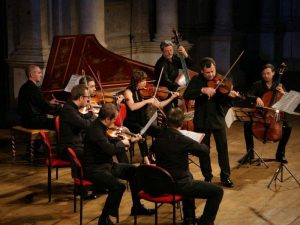It is not easy to set a date for the beginning of music, because we do not have enough clues and testimonies to lead us to do so, but we can set a conventional date for the birth of modern Western music: 1000 AD. In this year the idea of combining sounds with human voices to form a melody was born, and it is also the year in which the Catholic Church, the most important and influencing institution of antiquity, recognizes the need to standardize the single-line unaccompanied chants that have been used in sacred ceremonies for centuries. This Christian proto-music, derived from the Greek songs and from the chants used in synagogues, evolves into what we call “plainchant”, “plainsong” or “Gregorian chant”, the traditional music of the Western Church – a single melodic line, usually sung without accompaniment, that, according to some musicologists, begins to be used after the death of Pope Gregory I. However, there is still debate regarding how the chanting we now identify as “Gregorian” develops from the 5th to the 9th century –. Anyway, there is no accepted written system to denote the pitch or length of a note in those days, therefore we will probably never know how the chants sounded according to people of the past.
An important figure for music: Guido d’Arezzo
Guido d’Arezzo is a Benedictine monk who works as a teacher and music theorist, that is generally credited with the introduction of a stave of horizontal lines by which one can accurately record the pitch of notes. He also comes up with what we now call the tonic sol-fa system, whereby every note is given a name according to its relationship with other notes in the scale, as opposed to being named after the letters of the alphabet (a practice derived from the ancient Greeks), but still there is no method of notating the length of a note. 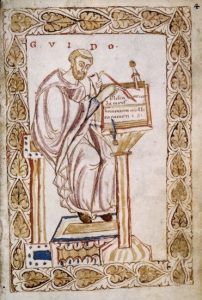
Parallel to the development of liturgical music, in the 13th century runs the flowering of the secular music of the troubadours, the poet-musicians who sing of beautiful ladies, chivalry, spring and suchlike. These are the successors of the court minstrels, employed to sing the great sagas and legends, who themselves have their less-educated counterparts in the jongleurs, itinerant singers and instrumentalists. These 200 years witness the birth of harmony – the study and use of chords –, of modern musical notation, the dance and song craze which pervades Europe during the time of the Crusades and the complex structure of the troubadours’ poetry. Diaphony, ‘two-voiced’ music, dominates all musical compositions until the 13th century. This two-part singing as applied to Gregorian chants are also called organum.
Polyphony is instead concerned with the sounding of more than one note, but through melody. The addition of a third, fourth or more independent musical lines sung or sounded together is the next obvious development, and it is the extraordinary Philippe de Vitry, a French bishop, musical theorist, composer, poet and diplomat, who shows the way in a famous book called “Ars Nova”, “The New Art” (as opposed to the “Ars Antiqua” of Guido d’Arezzo). In this period there are also time-signatures that indicates a rhythm for the music, and improvements in notation symbolize note lengths – the ancestors of our minim, breve and semibreve.
The fifteenth century: many changes about music
By the middle of the 15th century, the royal palaces and the great houses of noblemen usurp the Church as the single most important influence on the course of music. The most noticeable advances during this period are the increased freedom composers give to their vocal lines and the difference in the treatment of the texts they set. In fact, previously words had to fit the music. A great exponent of the music of the 15th century is Josquin Desprez, a musician whose music includes a quirky humor and a huge variety of expression. He writes music that has different voices singing different notes, but the same words at the same time. Not surprisingly, Josquin has been called “the first composer whose music appeals to our modern sense of art”.
The sixteenth century: music revolution
The 16th century witnesses four major musical phenomena: the tradition of instrumental music is founded, the first opera is produced and music begins to be printed for the first time. Before, for most people the opportunity to see and read music had simply not been there, while musicians can now, for the first time, stand around a score printed in a book and sing or play their part. Limited and expensive though it is, music is now available. No wonder it flourishes so rapidly. At this time the Christian Church has a central importance: the buildings which the Renaissance men erect with such splendour and confidence symbolize the age of ‘re-birth’ and the music of the time is omnipresent in the great European cathedrals. Now, the Church musicians lead to the madrigal, a poem whose subject is usually amorous or pastoral. The madrigals are all for unaccompanied voices, that is how the vast majority of music produced up to this time is conceived. The recorder, flute, viol and spinet had played their part in dance music and in accompanying voices, but now composers such as Gibbons, Farnaby, Byrd and Frescobaldi begins to write music for specific instruments, though it must be said that the art form will not truly flourish until the Baroque era. Two innovations are by the Italians Andrea Gabrieli, who combines voices with brass instruments, and his nephew Giovanni, whose antiphonal effects for choirs of brass instruments might have written for our modern stereo systems. Indeed, Italy is the country (actually a collection of independent states) which dominates the music world for a century and a half from 1600. Such is the power of Italian influence at this time that music adopts the language as its lingua franca. To this day, composers almost universally write their performance directions in Italian. In the late 16th century, artists, writers and architects become interested in the ancient cultures of Greece and Rome and in this period dramma per musica (drama by means of music) is created, a play with a musical setting.
Into the ring then comes one of the supreme musicians of history, Claudio Monteverdi. He doesn’t write the first opera (that honour goes to Jacopo Peri), but in his work Orfeo (1607) he gives solo singers a dramatic character to portray and florid songs to sing. There are choruses, dances, orchestral interludes and scenery. Opera is a markedly different entertainment to anything that had gone before, but, more importantly, it is a completely new way of using music. Pier Cavalli and Marc’Antonio Cesti develops a type of flowing and lyrical song inspired by the flow of spoken Italian: ‘bel canto’, ‘beautiful singing’. No class of singers is more popular than the castrati: feted wherever they appears, the castrati, who have their testicles removed as young boys to preserve their high voices, are highly paid and immensely popular. The practice of castration to produce an entertainer, an extraordinary barbaric concept, will be only halted in the early 19th century. The last castrato, Alessandro Moreschi, actually will survive until 1922. The weakening of the Church’s authority after the Reformation encourages composers in the writing of instrumental music for groups, music moreover that takes into account the relative strengths and colours of the different instruments, another new concept. In this time, there is a brilliant instrumental soloist, the Italian-born violinist Jean-Baptiste Lully. He works in France for King Louis XIV, the extravagant builder of Versailles who employs 120 musicians in various bands. An orchestra of twenty-four violins provides music at the French court. With Lully’s addition of flutes, oboes, bassoons, trumpets and timpani, the modern orchestra begins to emerge.
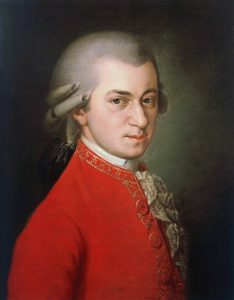 The introduction of the sonata
The introduction of the sonata
Another important by-product of the Italian opera is the introduction of the sonata, a piece to be sounded (played) as opposed to sung (cantata). It begins with the Italian violinists imitating the vocal display elements of opera, a single melody played against a harmonized background or accompanied by chords. If you listen to a sonata, you realize that the theme is not a tune, but a sequence of chords. Makers of musical instruments responds by adapting and improving instruments: the great Italian violin makers Stradivari, Amati and Guarneri, the Ruckers family of Antwerp with its harpsichords and the Harris family of England building organs. A final contribution to this period is made by Italian opera. The use of the orchestra in opera leads the composers to begin to write overtures in three sections (fast, slow, fast) (allegro, adagio, allegro), providing the model for the classical sonata form used in instrumental pieces, concertos and symphonies for the next 200 years and more.
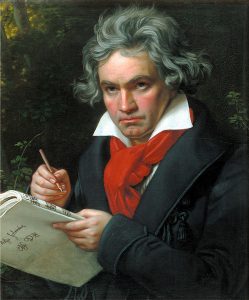 The invention of concerto
The invention of concerto
The concerto develops from the dance suites popular in Italy at the beginning of the 17th century, known as the sonata da camera. Originally a composition that contrasts two groups of instrumentalists with each other, the form develops into the concerto grosso (great concerto) of which the first leading exponent is Arcangelo Corelli. Geminiani, Albinoni, Torelli, Handel and others contributes to the concerto. No concerto in this period achieves the popularity of Vivaldi’s, whose 500 essays in the genre are the product of one of the most remarkable musical minds of the early 18th century. The Four Seasons, among the best known and most frequently-played pieces of classical music, illustrates the new concept. Bach is a musical heavyweight belonging to the North German school of organ music, founded by Frescobaldi and Sweelinck, and in his own time is considered old-fashioned, a provincial composer from central Germany, but his music contains some of the noblest and most sublime expressions of the human spirit. The 48 Preludes and Fugues explore all the permutations of fugal writing in all the major and minor keys. The technical brilliance of Bach’s music is subsumed in the expressive power of his compositions, in particular his organ music, church cantatas and the great St Matthew Passion and Mass in B minor. Bach’s great contemporary, Handel, also comes from Germany, but in contrast is a widely travelled, man-of-the-world who settles in England and becomes a shrewd entrepreneur and manipulator of musical affairs. He develops the typical 17th-century dance suite into such famous occasional works as The Water Music and Royal Fireworks Music. Opera is a field into which Bach never ventures, but Handel, between 1711 and 1729, produces nearly 30 operas in the Italian style. Bach is the last great composer to be employed by the Church.
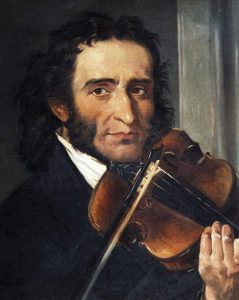 The Classical era
The Classical era
If Bach and Handel dominate the first half of the 17th century, Haydn and Mozart are their counterparts for the latter half and represent all the virtues of the Classical style. Italy dominates the musical world of the 17th and early 18th centuries with its operas and great violinists, but from the middle of the 18th century, the centre of musical pre-eminence moves to Vienna, capital of Austria, birthplace of the aforementioned Haydn and Mozart. Wolfgang Amadeus Mozart is recognized as one of the greatest composers in the history of Western music. With Haydn and Beethoven, he brings to its height the achievement of the Viennese Classical school. Unlike any other composer in musical history, he writes in all the musical genres of his day and excels in everyone. He is a prodigy: he composes his first piece of music in 1761, at age 5. By age 6, he performs in several courts. In London he composes his first symphony. It is said that Mozart one day goes to Rome, to the Sistine Chapel, and hears the Sistine Choir in the famous Miserere of Gregorio Allegri, which was considered the choir’s exclusive preserve, but which Mozart copies out from memory. This speaks volumes about his genius. In fact, there is a theory according to which there is a ‘Mozart effect’ that can temporarily increase people’s cognitive abilities just by listening to his music.
Music in the 19th century
Starting from the 19th century, however, the most iconic and highly successful moment for the world of cultured music begins. With great melodrama and great symphonies, new composers such as: Dvorak, Beethoven, Schubert, Rossini, Verdi, Mascagni, Paganini, Chopin, Bizet, Wagner, Tchaikovsky and Brahms sanction the musical success of the period. Each of these artists leaves a piece of themselves in every note written and played. With Verdi, Rossini, Puccini and Mascagni a panorama of works famous all over the world is collected, such as ‘La traviata’, ‘Nabucco’ and ‘Aida’ (by Verdi); ‘The Barber of Seville’, ‘Cinderella’ and compositions such as “Stabat Mater” (by Rossini). One of the most popular of this time is perhaps Giacomo Puccini, who with his ‘La bohème’, ‘Turandot’ and ‘Madama Butterfly’ composes music for librettos with popular stories that are easily understood by the spectators of the time. With ‘Cavalleria Rusticana’, Mascagni offers us a glimpse of extraordinary intensity of Sicilian peasant society, with its small dramas linked to betrayals and loves, infusing all the smells and flavors with his music of the Sicilian land, giving us, with the interlude, an authentic and exciting masterpiece. Ludwig Van Beethoven, however, is the most important figure of this period. He is a German pianist and composer widely considered to be one of the greatest musical geniuses of all time. His innovative compositions combine vocals and instruments, widening the scope of sonata, symphony, concerto and quartet. Beethoven’s personal life is marked by a struggle against deafness, and some of his most important works are composed during the last 10 years of his life, when he is quite unable to hear. He dies at the age of 56.
Andrea Romano e Ruben Carotenuto 2Q classico Cambridge 2.0 – Liceo Vico Napoli

